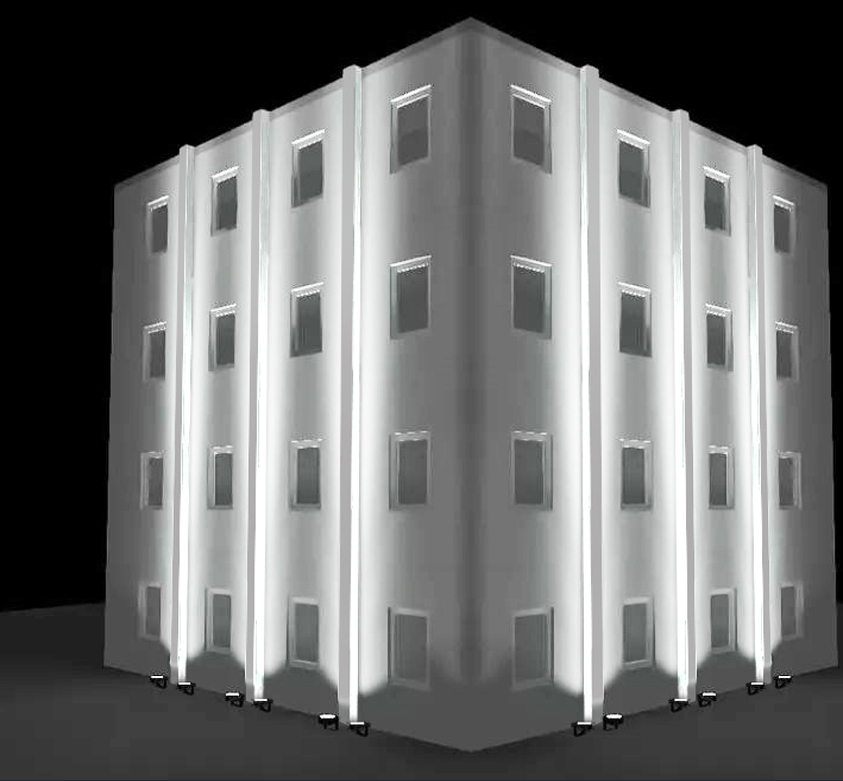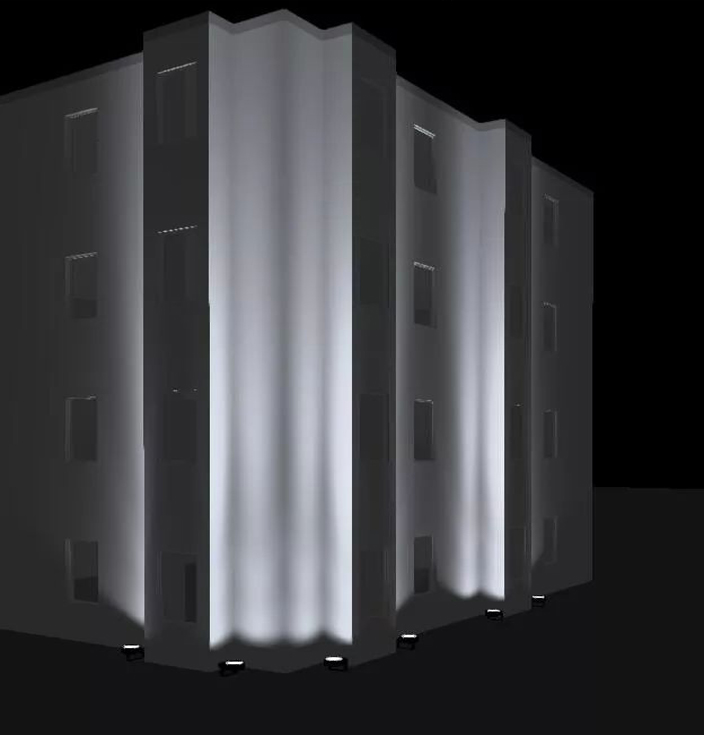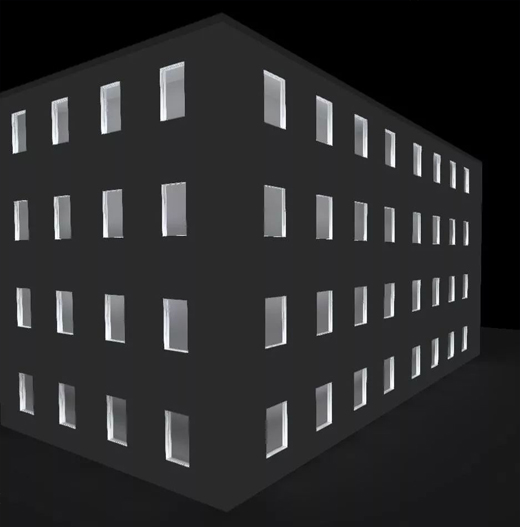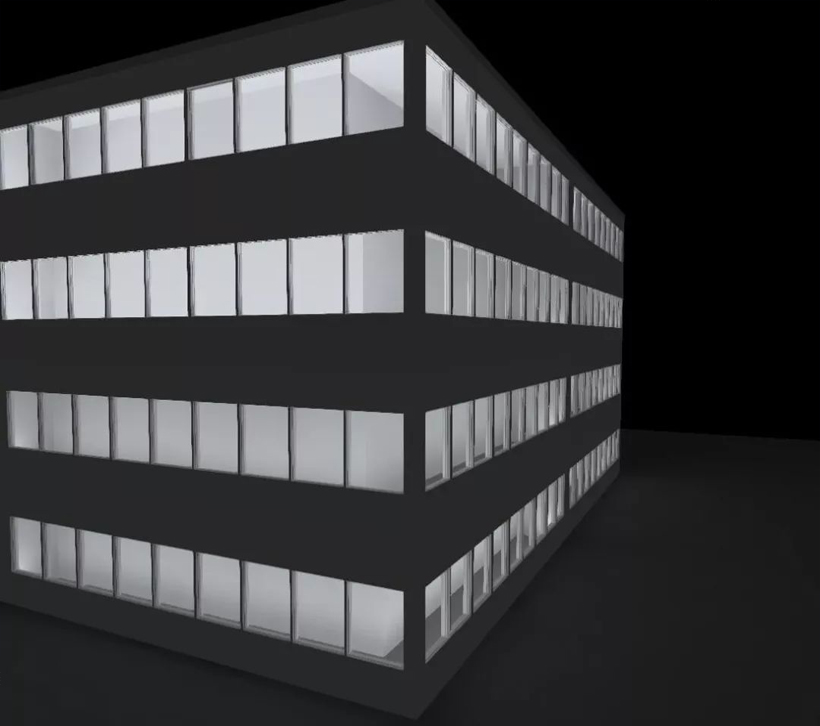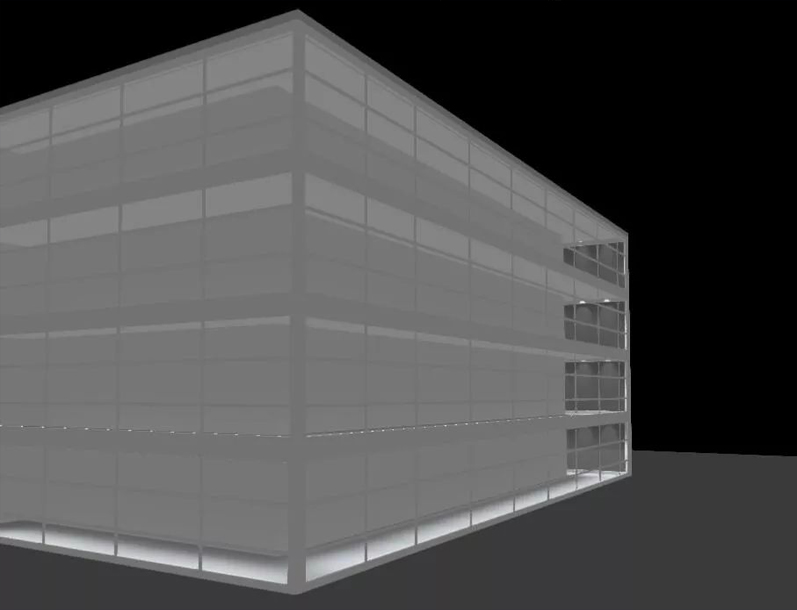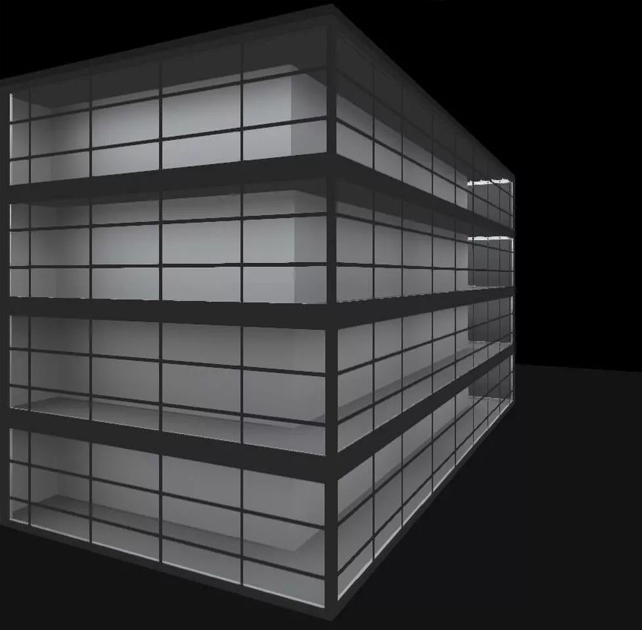Can we do facade lighting like a Professional Designer?
The façade image of the building depends not only on the material and shape of the façade itself, but also on light (including the direction of light) and color. During the day, the direction and intensity of sunlight change with time, and the appearance of the building changes with daylight. At night, when different lighting methods and lighting control combinations are used, the façade of the building presents a different image.
Daylight is admired for its constantly changing nature, and here is an analysis of the north to South Mount Rushmore, which take on a different image depending on the daylight. The influence of different natural lighting and artificial lighting on the image of buildings is magic.

On a clear morning, the sun shines horizontally, and the details are subtle and striking.

Near noon on a clear day, the sun shows a strong sense of direction, and the details are vivid and strong.

On a cloudy day, the sun is calm and the details are soft, but still visible.

With normal artificial lighting, the intensity and quality of light cannot match daylight, details are faded.
There are different types of building façade. According to the different types of building façade, we should adopt the lighting method suitable for this kind of façade, in order to better express the aesthetic feeling of the building at night. The following are some outdoor facade lighting tips from some professional lighting designers.
The corresponding analysis is made according to these 7 different façade types below, with some Facade Lighting Tips.
1. Lighting of Solid Facade
Floodlighting on the solid façade will flatten the façade, and as the façade rises, the brightness of the façade will gradually decrease and a low contrast transition to the dark night sky will occur. The use of floodlighting highlights the surface texture of the facade material. And for those facades that do not have texture, the light that spreads out over the façade forms a light spot that itself forms the important pattern of the Façade
▲Flood lighting from the ground opposite the facade (project light)
Fixture layout schematic / Facade lighting effect rendering
▲The solid part of the facade adopts the downward wall lamp
Fixture layout schematic / Facade lighting effect rendering
02. Lighting for vertically divided facade
The facade effect of vertical separation is enhanced by a narrow light projection on the vertically separated facade. To avoid shadows, the luminaire should be properly positioned and the lighting direction should be oriented parallel to the facade.
▲For vertically divided column, light it from both sides
Fixture layout schematic / Facade lighting effect rendering
3. Lighting for horizontally separated facades
When project light on the horizontally separated facade, the upward lighting close to the facade will enhance the three-dimensional feeling of the facade. By increasing the distance of the luminaire from the façade, the long and heavy shadow of the raised portion of the façade can be reduced.
Sometimes, LED linear lights can be arranged on the horizontal partition structure of the facade to represent the horizontal partition of the building.
▲Floodlighting from the ground opposite the facade
Fixture layout schematic / Facade lighting effect rendering
▲Line lighting along the horizontal partition
Fixture layout schematic / Facade lighting effect rendering
4. Lighting with concave-convex facade
Generally speaking, the different parts of the concave-convex facade can be treated with different illuminance or different light color to enhance the rhythm of the facade appearance. The use of flood light with wide beam angle will reduce the contrast between the bump of the façade, making the building “flat. “.
▲The concave part is illuminated by the upward lighting
Fixture layout schematic / Facade lighting effect rendering
5. Illumination of a facade with window or holes
When lighting the façade with window or holes, it should be noted that the lighting of the façade does not produce glare to the people indoors. The general use of lighting to highlight the outline of the window or hole will enhance the building’s sense of drama.
▲Light the concave outline of the window or hole
Fixture layout schematic / Facade lighting effect rendering
6. Strip-shaped facade lighting
For the strip-shaped layered façade, by spreading the light from the inside out, it reinforces the building’s presence at night and creates a strong contrast between the lighted windows (interior) and dark façades.
▲Interior uplighting
Fixture layout schematic / Facade lighting effect rendering
7. Lighting of Façade with Transparent Glass Curtain Wall
In daylight, the transparent façade of the building is dark and reflects its surroundings. The presence of indoor lighting allows one to see the interior of a building. The upper light on the interior top surface enhances the presence of the roof, making the interior brighter at night, and the framing of the facade creates a silhouette effect. When linear lighting is applied to the top surface of each floor, the horizontal structure of the building is strengthened.
▲Interior downlighting
Fixture layout schematic / Facade lighting effect rendering
▲Interior linear strip light
Fixture layout schematic / Facade lighting effect rendering
There is no fixed method of lighting different forms of façades. The most important thing is that the lighting designer should master the corresponding effects and advantages and disadvantages of different methods, then make decision according to the overall creative design concept.
The following photos show the different night lighting on the different types of façade:
• As shown in the following figure, in the solid façade, the building façade has a turning relationship, the treatment of different façade with different illuminations helps to express the three-dimensional feeling of the building.
• As shown in the figure below, in a vertically divided building, when lighting the solid dividing walls of the facade from bottom to up, but not illuminate the windows, it will not only embody the feeling of the building’s upright and straight, and at the same time, it can also express the rich details of the building’s facade and the three-dimensional feeling of the building.
• As shown in the image below, in a building with curved glass walls, strong white light inside each horizontal divider strengthens the horizontal arc of the building, making it look both stable and fluid.
The building surface is the first impression of the building, which not only reflects the function of the building, but also reflects the distinctive characteristics of the building. And excellent lighting design, often can convey the details and characteristics of the building, also can accurately convey the design concept and evoke resonance, let the building become a landmark at night and unique landscape.
eLicht
Archillumi, a One-stop Facade Lighting Solutions Brand.








